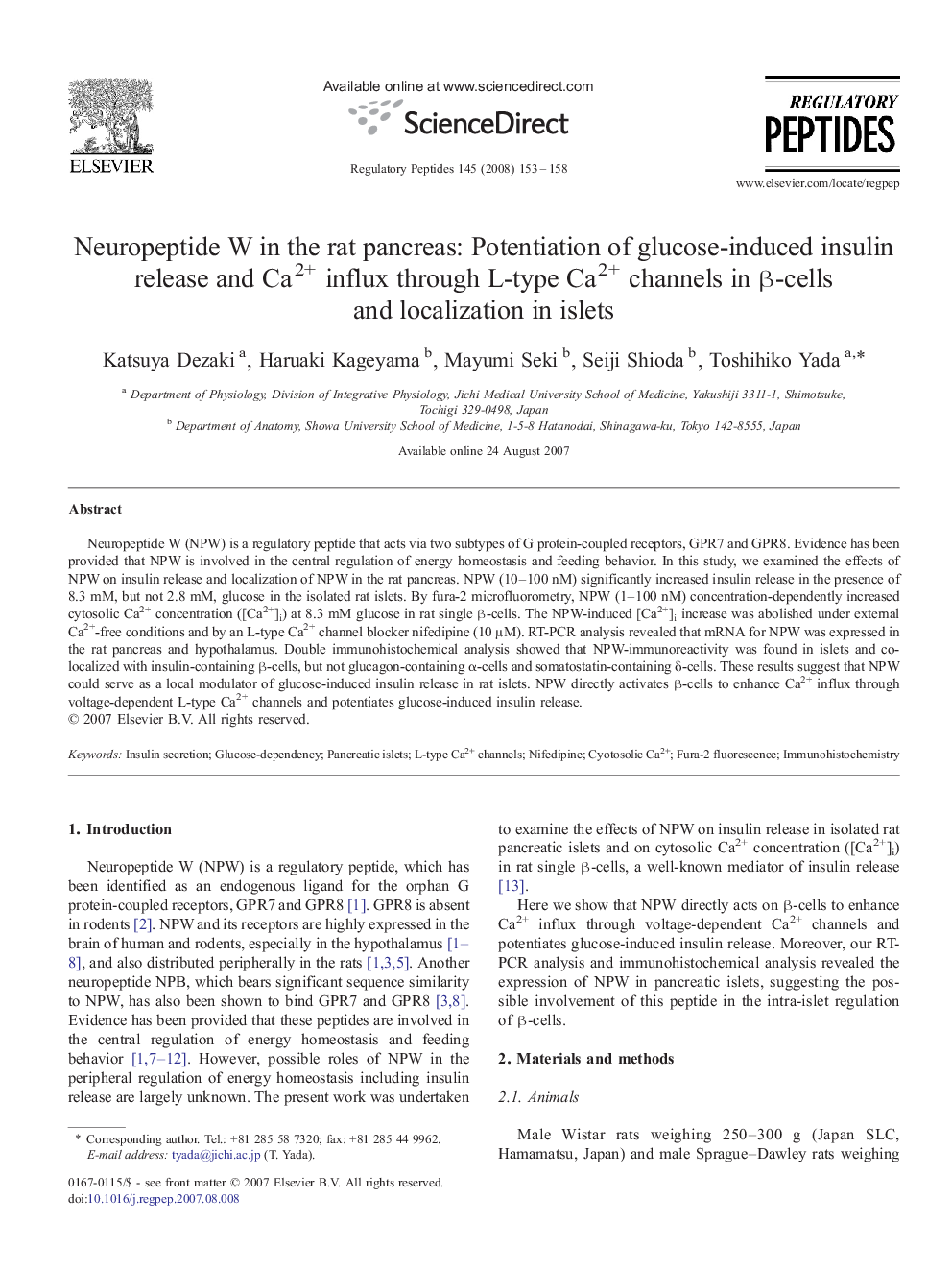| Article ID | Journal | Published Year | Pages | File Type |
|---|---|---|---|---|
| 2023335 | Regulatory Peptides | 2008 | 6 Pages |
Neuropeptide W (NPW) is a regulatory peptide that acts via two subtypes of G protein-coupled receptors, GPR7 and GPR8. Evidence has been provided that NPW is involved in the central regulation of energy homeostasis and feeding behavior. In this study, we examined the effects of NPW on insulin release and localization of NPW in the rat pancreas. NPW (10–100 nM) significantly increased insulin release in the presence of 8.3 mM, but not 2.8 mM, glucose in the isolated rat islets. By fura-2 microfluorometry, NPW (1–100 nM) concentration-dependently increased cytosolic Ca2+ concentration ([Ca2+]i) at 8.3 mM glucose in rat single β-cells. The NPW-induced [Ca2+]i increase was abolished under external Ca2+-free conditions and by an L-type Ca2+ channel blocker nifedipine (10 μM). RT-PCR analysis revealed that mRNA for NPW was expressed in the rat pancreas and hypothalamus. Double immunohistochemical analysis showed that NPW-immunoreactivity was found in islets and co-localized with insulin-containing β-cells, but not glucagon-containing α-cells and somatostatin-containing δ-cells. These results suggest that NPW could serve as a local modulator of glucose-induced insulin release in rat islets. NPW directly activates β-cells to enhance Ca2+ influx through voltage-dependent L-type Ca2+ channels and potentiates glucose-induced insulin release.
